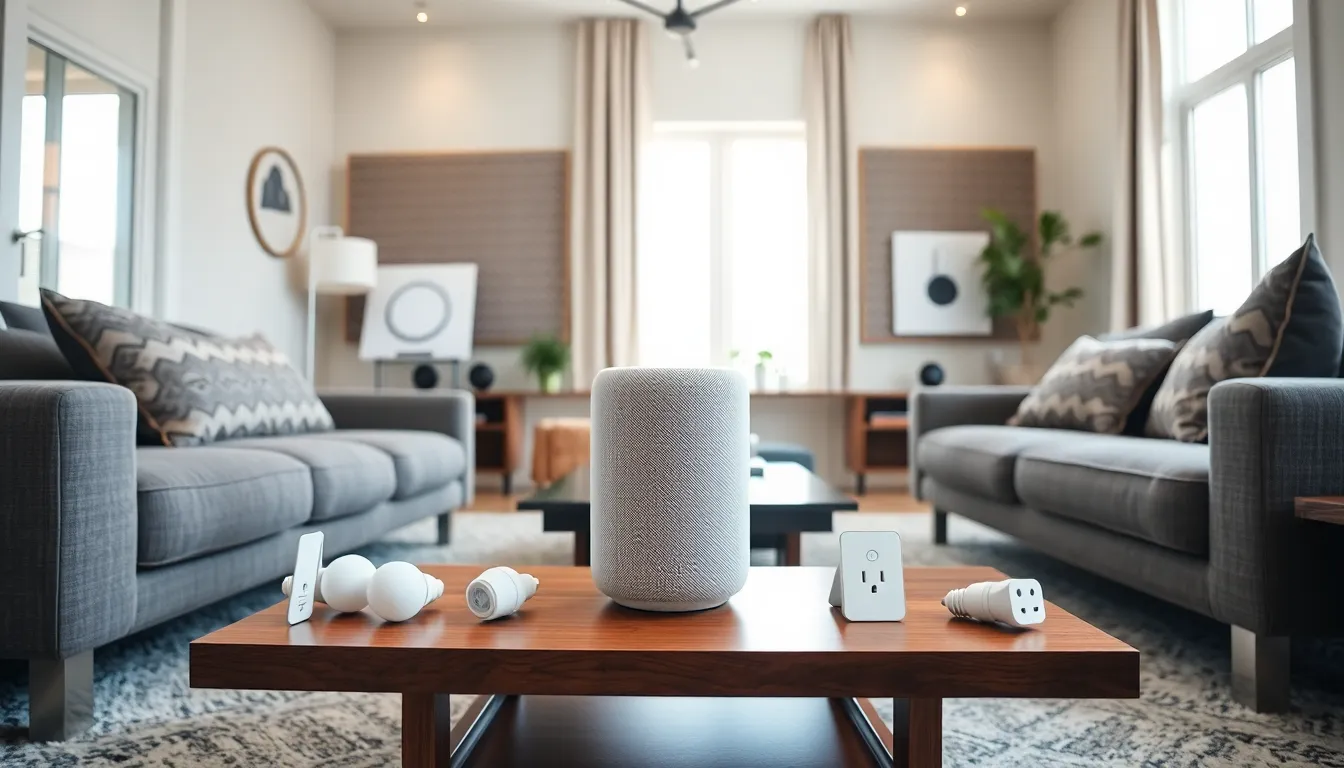Welcome to the exciting world of Google IoT, where your toaster could very well be smarter than your college roommate. Picture this: devices communicating seamlessly, data flowing like coffee on a Monday morning, and all this magic powered by the tech giant Google. Curious? You should be. Let’s jump into what makes Google IoT not just a buzzword, but a game-changer in today’s fast-evolving tech landscape.
Table of Contents
ToggleWhat Is Google IoT?

Google IoT, short for the Internet of Things, refers to Google’s collection of technologies and services designed to connect everyday devices to the internet and to one another. This isn’t just about smart fridges that tell you when you’re out of milk, although that’s a delightful perk. At its core, Google IoT enables devices to collect, send, and receive data, making them smarter and more efficient. This cloud-based platform to help management and connectivity highlights how Google is redefining what it means to be ‘connected’ in a digital age. By enabling a new level of interactivity and automation, Google IoT transforms traditional devices into intelligent assets that work together seamlessly.
Key Features of Google IoT
The features of Google IoT are impressive yet intuitive, showcasing Google’s dedication to innovation. One standout feature is scalability, the ability of IoT solutions to grow as needed. Companies can start small and expand their networks without fear of hitting technical limits. Another key advantage is real-time data analytics. This empowers businesses to make timely decisions based on actionable insights.
- Cross-device compatibility is another major plus, allowing various devices from different manufacturers to work together seamlessly.
- Also noteworthy is the robust security framework implemented by Google, ensuring that users’ data stays protected and secure while navigating the digital landscape.
- Also, Google’s focus on integrating machine learning and AI means that the system gets smarter the more you use it, continually enhancing user experience.
Benefits of Google IoT
Organizations that adopt Google IoT can reap numerous benefits. One of the most significant advantages is increased efficiency. Automated processes eliminate mundane tasks and help streamline operations. Imagine the time saved without manual data entry, your employees might actually have time for coffee breaks.
Also, Google IoT leads to cost savings in the long run. Reduced energy consumption, optimized workflows, and predictive maintenance effectively minimize overheads.
Organizations can also experience enhanced data visibility. With real-time insights, businesses can fine-tune operations and improve decision-making. Finally, the network’s flexibility allows for custom solutions in various industries, from agriculture to healthcare.
Use Cases for Google IoT
Google IoT applications are virtually limitless, spanning a variety of sectors. In the smart home arena, users enjoy ease of management for everything from lights to thermostats. With Google Nest, you can even turn your living room into an ambient paradise with just a voice command.
Manufacturing is another domain where Google IoT shines. Predictive maintenance can reduce downtime, saving companies significant amounts of money. By analyzing data from machines, businesses can detect problems before they escalate.
In the healthcare sector, patient monitoring solutions enable medical professionals to track vital statistics remotely, improving patient outcomes. Finally, in agriculture, IoT sensors allow farmers to monitor soil conditions and weather patterns, optimizing crop yields.
These examples showcase how versatile Google IoT is, addressing different needs with tailored solutions.
Integrating Google IoT with Other Technologies
Integrating Google IoT with other technologies can open doors to new possibilities. When paired with artificial intelligence, businesses can unleash predictive analytics, enhancing decision-making capabilities. Utilizing machine learning algorithms, organizations can better anticipate market shifts and consumer behavior.
Blockchain is another technology that enhances Google IoT by providing enhanced security and transparency. Sensitive data can be securely stored and transferred, making businesses more compliant with regulations while empowering customer trust.
Finally, the integration of cloud computing with Google IoT services allows for extensive data storage and analytics, further optimizing operational efficiency. By leveraging these integrations, organizations can create comprehensive and powerful tech ecosystems.
Challenges and Considerations in Google IoT Implementation
Even though its many advantages, implementing Google IoT is not without challenges. One pressing issue is interoperability. With a multitude of devices and platforms, ensuring they can communicate effectively remains crucial. A lack of standards may hinder seamless integration, creating potential roadblocks.
Security concerns are also a top priority. Though Google’s security frameworks are robust, the reality of cyber threats calls for continuous vigilance. Businesses must invest in regular updates and training to maintain security integrity.
Finally, data privacy presents another challenge. As devices collect vast amounts of data, companies must ensure they comply with regulations while respecting consumer privacy. Addressing these challenges head-on will be vital for businesses aspiring to leverage Google IoT.
Future Trends in Google IoT
As technology continues to rapidly evolve, Google IoT will also advance. One trend to watch for is the shift towards edge computing. With data processing happening locally rather than in a centralized cloud, response times will improve, enabling real-time decision-making. This becomes crucial for applications requiring immediate responses, like in autonomous vehicles or urgent medical emergencies.
Another anticipated trend is the growth of personalization. As IoT devices gather more data, they will learn individual user preferences, leading to ultra-customized experiences, imagine a smart assistant that prepares your favorite playlist and adjusts your home’s ambiance based on your mood.
Finally, environmental sustainability will continue to play a significant role. Google IoT solutions can contribute to smarter energy consumption and waste management, positioning businesses as more eco-friendly while contributing positively to climate change.








